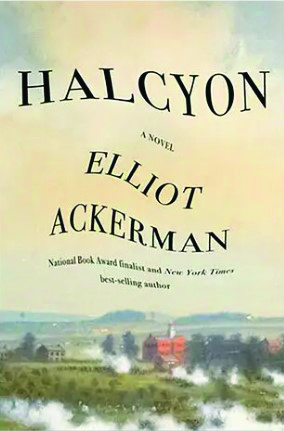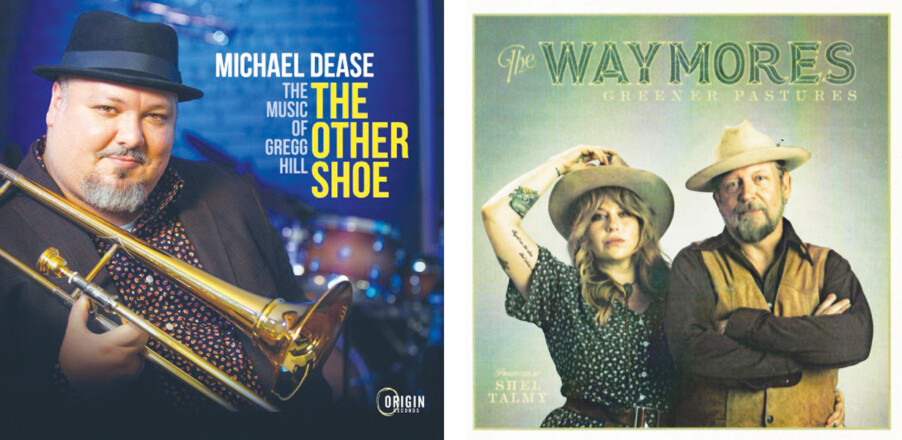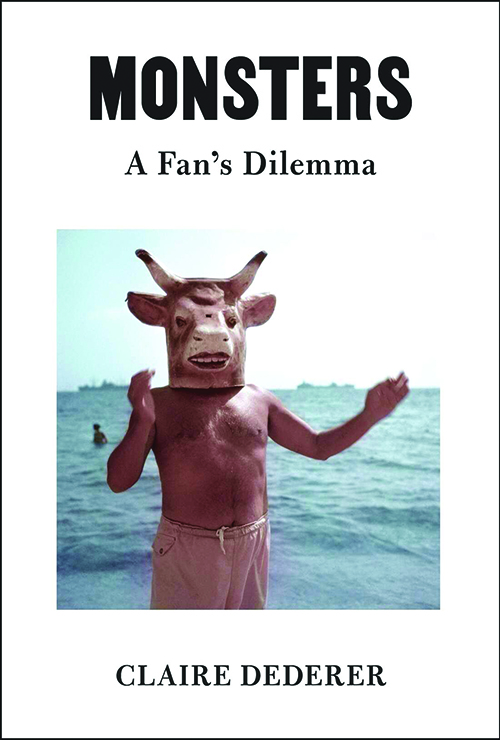Halcyon, by Elliot Ackerman (Deckle Edge/Knopf, 256 pages)
In a recent poll, fewer than 10 percent of young Americans said they were interested in military service, according to an NBC News story. This makes Elliot Ackerman one of a disappearing breed of writers, writers in the mold of Vonnegut, Hemingway and Salinger, who bring an intimacy with military life to their work.
Ackerman, a decorated Marine who served in Iraq and Afghanistan, used his experience in his 2022 nonfiction book The Fifth Act, America’s End in Afghanistan. But in his new novel, Halcyon, Ackerman offers a more subtle slice of military history, that of the Civil War, through a protagonist who is studying postbellum attitudes at a time of dizzying biotechnological change.
The change: Scientists have just figured out how to resurrect cryonically preserved organisms — first mice, then humans. This isn’t set in the future, but in 2004, in an alternate universe in which Al Gore is president and under fire for pardoning Bill Clinton.
If this sounds mind-blowingly complex, yes, on some levels it is. But in sparse, logical prose, Ackerman has created a completely plausible universe and characters who grapple with seemingly disparate questions, such as whether it is morally right to tear down old monuments (such as the Virginia Monument at Gettysburg) and what are the unforeseen consequences of bringing dead people back to life.
The story revolves around a historian and college professor, Martin Neumann, who is recently divorced and has been granted a semester-long sabbatical to advance his research, which is inspired, in part, by the work of the late (real-life) historian Shelby Foote.
Neumann has rented a cottage on an estate in the foothills of the Blue Ridge Mountains in Virginia. It turns out that the property is owned by one of the 134 people who have been recently resurrected — a World War II veteran turned prosecutor named Robert Abelson.
Neumann doesn’t know from the start — he simply thinks the nonagenarian is remarkably healthy: “His face was high-boned, his cheeks rosy and vital, his features distinct. … He was possessed by a vigor that he insisted was the result of his daily walks.”
Fortuitously, Abelson had long ago married a woman 20 years his junior, so they weren’t unusually matched. And as the couple grow closer to their tenant, Abelson’s wife suggests that Martin go meet with their physician, where he learns not only more about Abelson’s life (both pre- and post-resurrection) but also about Mary’s condition.
Meanwhile, the public, which had not known that the processes that had resurrected a brood of “Lazarus mice” had already been practiced on humans, is just now learning that human beings had also been “reborn.” In a press conference that is surreal on multiple levels, President Gore has announced that “Before death, a family would soon be able to apply to the Department of Health and Human Services for a ‘rebirth grant.’ Based on suitability — a vague criterion he did not fully define — the government would defray a portion, if not all, of the medical costs, making rebirth a possibility for ‘most any American’ …”
The resurrection storyline is fascinating enough on its own, as Ackerman’s characters work through the complexities of what this development would mean in a practical sense. At one point, for example, Ableson has to go to a Richmond courthouse to have his own death annulled, much like a marriage. His stepsons (who did not know that their stepfather was alive again until about the time the press got the story) have to mull what the news means for what they’d thought was their inheritance. And as the novel slowly reveals, there can be a troubling tension about what’s acceptable for people born, say, in 1915, and those born in 1995, when one lives in “a present that was not his own.”
But Halcyon also has a complex understory about alternative timelines — both in the past and in the present. The existence of a President Gore is one; the narrator suggests that the resurrection of the dead would not have been funded under a Republican president, and in one conversation with his daughter Ableman debates whether he owes Gore his vote by virtue of benefiting from government-funded science.
But there is also a running thread about what would have happened to America if certain aspects of the Civil War had gone differently — if, for example, Confederate General Stonewall Jackson had not died of pneumonia eight days after he was shot by his own troops, who’d mistaken him for a Union soldier. And Ackerman touches on current debates over what history is and how it should be represented. In touring a Civil War site with a fellow historian, Martin is disturbed by something his friend said: “The study of history shouldn’t be backward looking. To matter, it has to take us forward.”
In this, the novel is remarkably complex and intelligent, while retaining the aura of a science-fiction thriller.
The historian who argued that history shouldn’t be “backward looking,” also said, “Every ethicist knows that death isn’t such a bad thing. For mice. For people. Or for certain ideas.”
That is ultimately what Halcyon (the name comes from the Abelson estate) wants us to consider. While Ackerman’s no-frills prose won’t make anyone swoon, he has constructed a page-turner that doesn’t feel slickly commercial or dumbed-down, with a conclusion that is surprisingly satisfying. B+






